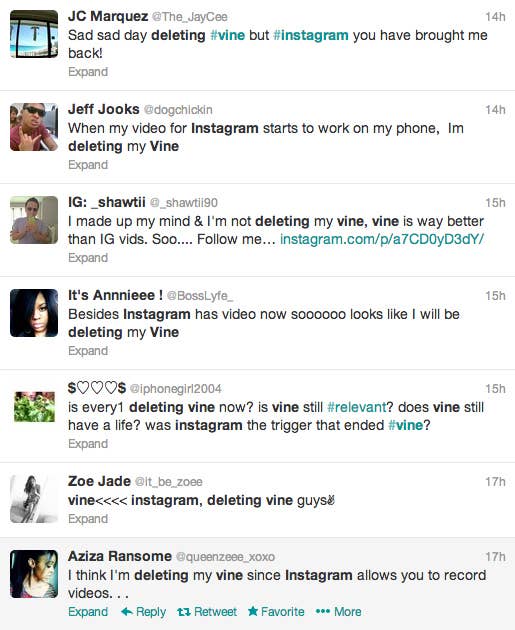
Facebook didn't become a billion-user powerhouse just by breaking new ground. In reality, it's spent most of its life as a diligent student.
Whether you dismiss Instagram's new video product as a desperate Vine rip-off or a well-reasoned and much needed alternative, Instagram's video feature is already a formidable test of Vine's user loyalty and staying power.
On Friday, as CNBC pointed out, Instagram link shares surpassed Vine shares according to Topsy, signaling perhaps that Vine's rapid rise may prove to be a short one. And if that's the case, Twitter may have no one to blame but itself.

Though the case has been made that Instagram wanted to be the "Instagram for video" before Vine was even a glimmer in Twitter's eye, the fact remains that Instagram chose to wait and learn from a competitor before incorporating a video product, a maneuver that's been part of Facebook's playbook for years.
And so, much like Facebook bided its time in the mid-2000s, watching MySpace and learning from the site's many missteps, Instagram waited patiently through Twitter's acquisition of Vine. While, unlike MySpace, Vine's "mistakes" were more like growing pains, Instagram sat quietly on the sideline, watching its competitor create the blueprint for online social video.
Vine's first six months proved that strict video time limits could work and dictated the features that currently set Instagram's update apart from Vine. Looking back, old App Store reviews now read like an instruction manual for the Instagram team, with the most negative reviews calling for nearly all of Instagram's new features, like filters, better privacy settings, longer clip lengths, and the ability to upload previously recorded videos. While Systrom and company were already mulling and cobbling together their own video product, Twitter and Vine cleared a path to market. They also removed a substantial element of risk.
For Vine, the new Instagram is part of an inevitable and frightening reality. While Facebook's "observe, then build" tactic doesn't always work, the company has an intensely loyal and growing user base in Instagram that overlaps in a big way with Vine's most ardent supporters: teenagers. Unlike Poke or Places, which had to be built as peculiar, isolated plug-ins, video fits snugly within Instagram's familiar and friendly interface. And as long as video doesn't alienate Instagram's original photo community, it's easy to see a scenario where smartphone users with already crowded home screens start to ditch the video-only app for an old standby that kills two birds with one stone.
In some spheres it's already starting to happen. Quick surveys of my friends, of Twitter, and of App Store reviews reveal that most casual users have stronger allegiances to Instagram than the still-new Vine. (And more deeply rooted social graphs.)
And so now we watch the race unfold. For Vine, there's hope as there is with any new social network that users will grow weary or out of trust with the establishment, or perhaps jump ship in favor of a fresh start to build a stronger network on another service. That's not out of the question for a company whose most important demographic is capricious young people.
For now, thanks to some careful study, it's once again Facebook's game to lose — and for Zuckerberg, a departure from a closely held motto: "Done is better than perfect."
